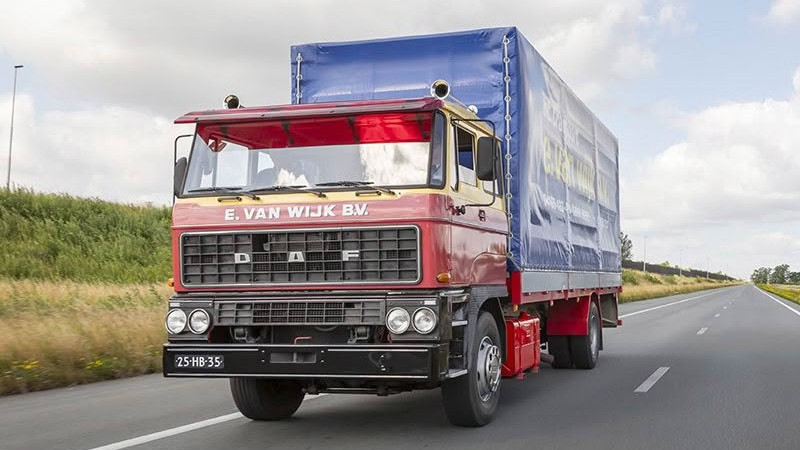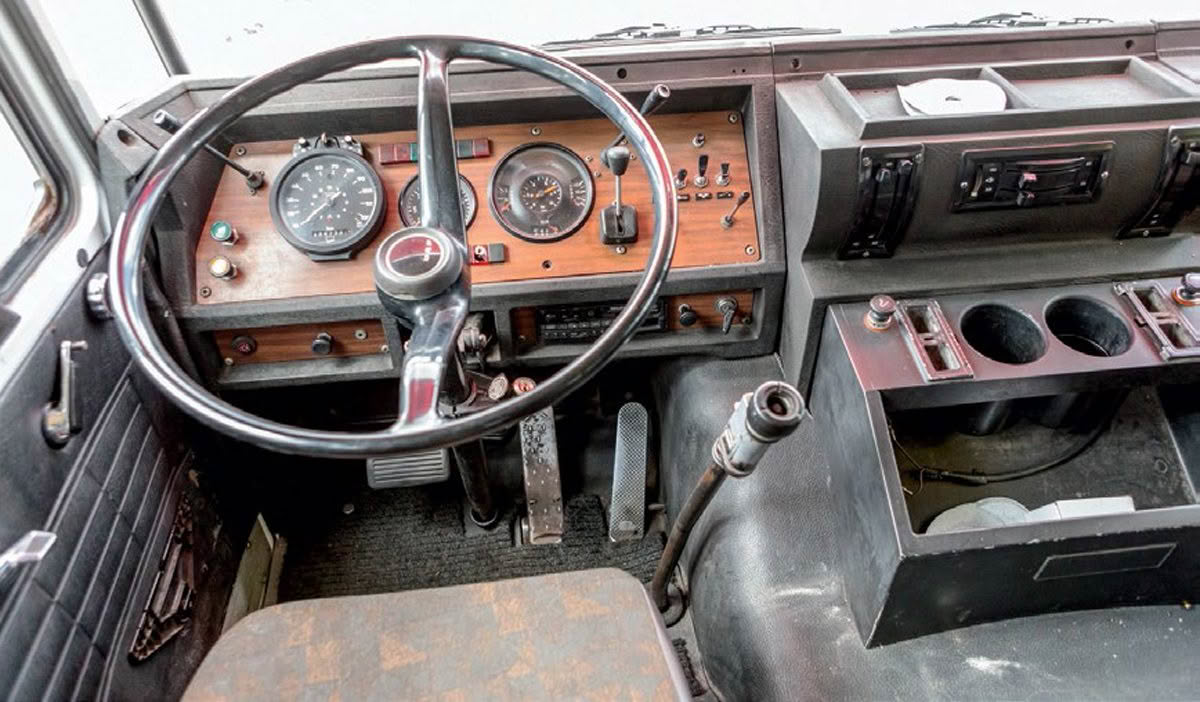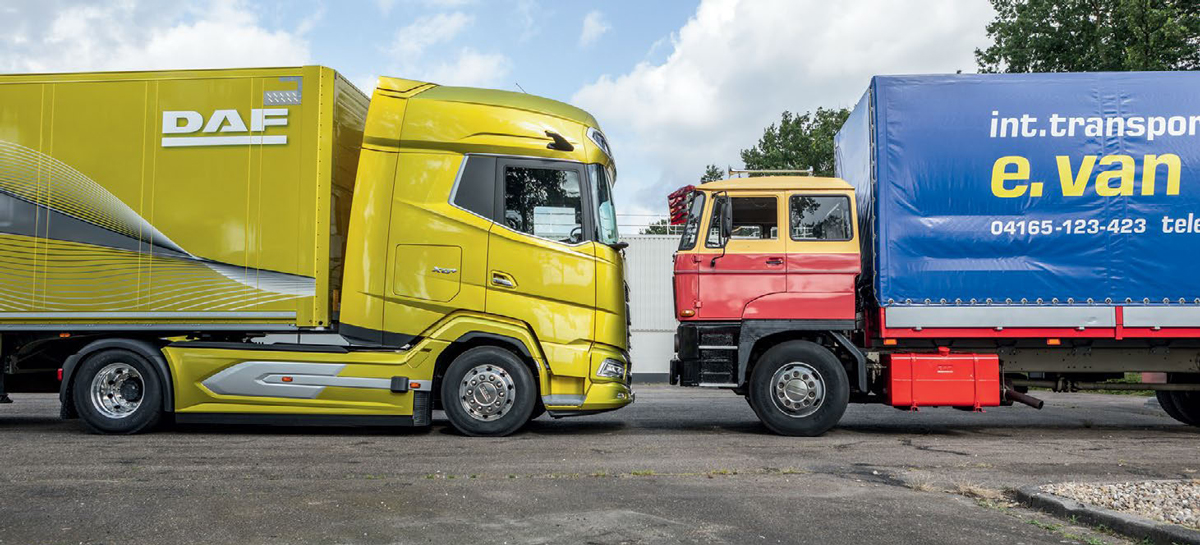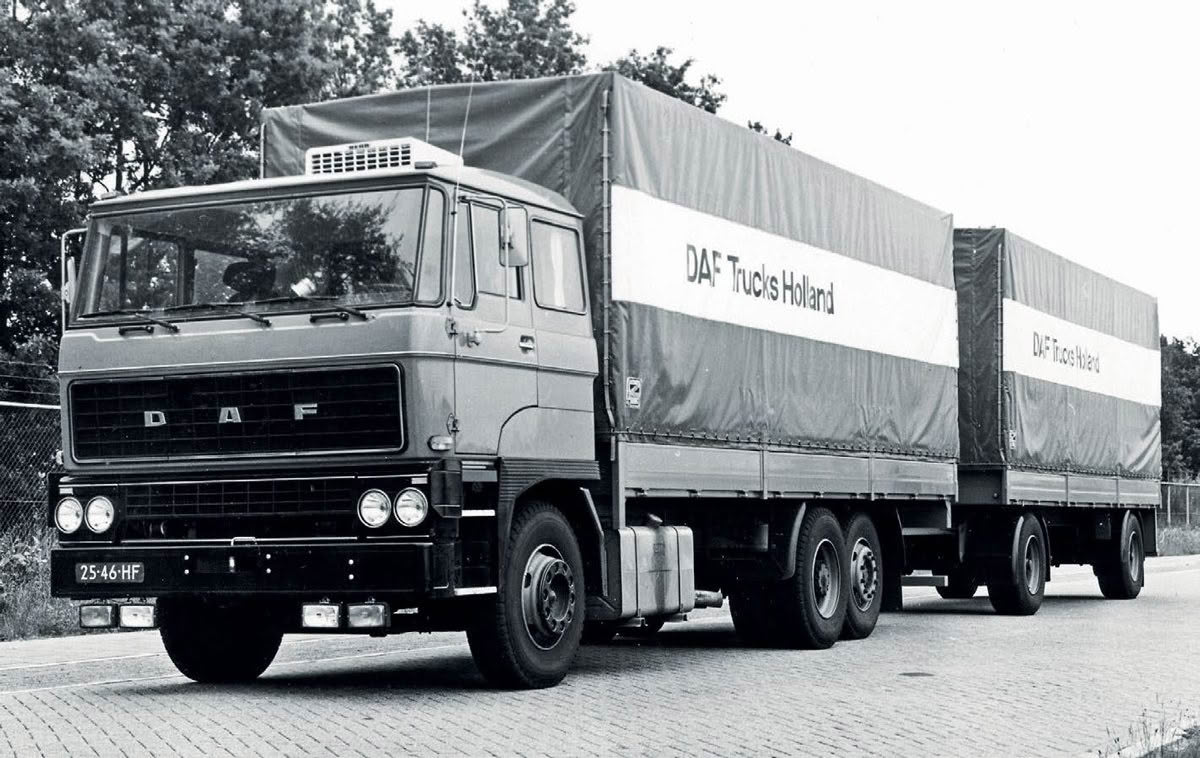Talking Double Dutch

To celebrate DAF’s 75 years of building trucks, Will Shiers heads to Holland and dons his rose-tinted spectacles for a drive in a 1979 DAF 2800.
Five years ago, I made a tongue-in-cheek video about driving a classic DAF 3300 in Scotland. In my misguided attempt to highlight the impracticality of driving a classic truck daily, I humorously struggled with the manual gearbox, complained about the lack of cruise control, sweated from the absence of air-conditioning, and got lost without a sat nav. However, most viewers took the film very seriously, bombarding me with negative comments. Some speculated about my parents’ marital status at my birth, others questioned my sexuality, and several helpfully suggested I could stand to lose a few pounds.
So, when DAF offered me the chance to drive a 1979 FA 2800 DKD in Holland as part of its Eindhoven factory’s 75th anniversary celebrations, I was somewhat hesitant. However, after some deliberation, I decided to give it a go, only this time I wouldn’t dare to find anything wrong with it.
On the road
It’s not just me who has piled on the pounds over the years, which becomes blatantly obvious when I park the 2800 face-to-face with a new XG+. Both trucks were designed for the same long-haul work, yet the older vehicle is closer in size to an XD distribution truck. Curiously, when I position the two vehicles side by side, the 2800 appears considerably wider, but it’s just an optical illusion.
The DAF F241 cab, as the name implies, is 241cm wide, making it 9cm narrower than the XG+. But who wants a big, spacious cab? The twin-sleeper 2800 feels much cosier inside, and there’s nothing wrong with stooping when you move around a cab.
Seatbelts are hugely overrated! Yes, they’ve saved close to half a million lives worldwide, but I don’t feel worried about driving this truck without one. In fact, it doesn’t bother me that the most significant safety devices in this vehicle are headlights, a horn and three windscreen wipers.
By comparison, the XG+ has more three-letter safety acronyms than you can shake a pair of clogs at – some mandated, others optional extras. But that’s just more stuff to go wrong, isn’t it? Drivers have become too reliant on safety equipment and expect modern vehicles to get them out of all sorts of scrapes. It’s far better just to concentrate, especially with thousands of kamikaze Dutch cyclists around. I think it was Jeremy Clarkson who once said that the best safety aid in a vehicle would be a spike sticking out of the centre of the steering wheel – it would certainly make us all more cautious drivers.

1-3) DAF’s idea of big-cab comfort has come some way
The demise of manual gearboxes has upset many people, especially on social media. According to Facebook, real men drive manuals, and the more complicated the gearbox, the more macho the driver. Summing up this attitude perfectly, one comment on my DAF 3300 video simply says: “He just loves automatic gearboxes like a woman.” I’m pleased to report that the 2800 boasts a 13-speed Eaton Fuller RTO 9513 splitter – although, regrettably, it does have synchromesh, which puts a small dent in my masculinity.
With only 410,000km on the odometer, the gearbox feels as good as it did the day it rolled off the line. Having something to do with my right hand is great (though judging by the comments on my last video, viewers seem to think my right hand is always busy anyway!), and manually changing gears quickly becomes second nature. We’re running unladen, so there’s no need to use the splitter, but I do anyway simply because I can. I can feel my libido improving each time I dip the clutch pedal. I’m so relieved I’m not in the XG+, with the latest ZF TraXon and its flawless gear changes.
The phrase “everything falls easily to hand” is overused in vehicle road tests. Fortunately, it doesn’t apply to the 2800, as few of its controls and switches are where you’d expect them to be.

We’ve become accustomed to self-cancelling indicators on steering column-mounted stalks, but they’re not all they’re cracked up to be. It makes far more sense to place the stick on the dashboard, allowing the driver to have a good stretch whenever they need to be turned on or off. Without a seatbelt holding me back, it’s a breeze to operate.
There are no touchscreens in this cab, just good old-fashioned buttons and dials, which is great news for me and everyone else who finds these modern devices distracting. No DAF 2800 driver ever rear-ended a car because they were preoccupied with Apple CarPlay.
It also lacks Bluetooth and a fancy audio system. At some point, an aftermarket radio/ cassette player was installed in this example, but why bother with that when you have a deafening 11.6L, six-cylinder engine to listen to instead?
When I was in the Boy Scouts, I wore an orienteering badge on my sleeve with pride, and I’ve always enjoyed map-reading. However, it’s becoming a dying art, as more drivers rely on satellite navigation to find their way. Thankfully, the 2800 doesn’t have one of these awful devices, and on all four occasions that I get lost, I am able to put my map-reading skills to good use.
Europe had a disappointing summer this year, with unseasonably cold and wet weather. Fortunately, I have chosen the hottest day of the year for my drive. I’m even happier when I discover that the old DAF doesn’t have air conditioning, effectively turning the cab into a Dutch oven. It does, however, have a perfectly functional driver’s window to roll down, even if the handle is broken. The sweat is pouring off me in bucketfuls, which is great – it might help me lose some weight. That should please the haters, too. Win-win!
DAF has invested millions in developing its Direct Vision System, which replaces external mirrors with cameras and screens. This includes Corner View, which substitutes the class 5 and class 6 front view, and kerb view mirrors. What a waste of money! Doesn’t it realise that real truck drivers prefer glass? The 2800 has two perfectly good mirrors that cost a fraction of the price to replace. They work well, even if they are a bit small and tend to vibrate violently.

DAF squeezes 530hp out of its MX13 engine, which strikes me as a bit excessive. At 307hp and 1150Nm, the 2800 has less than half that, which is more than adequate. What’s more, because it doesn’t have a speed limiter, I overtake the newer XG+, which is forced to do 90km/h on the motorway.
Another thing I find massively overrated is power steering. I believe it’s far better to have an unassisted bus-style steering wheel that demands significant amount of effort to turn. At the end of the day, you feel like you’ve actually put in a proper day’s work.
I do wish I had the chance to sleep in this truck, too, as the twin sagging bunks look incredibly inviting. Although, to be honest, I’d probably discard the mattress and sleep on a bare board just to emphasise my masculinity.
Overall, I hope I’ve conveyed how much I appreciate this truck, and perhaps I’ve even started to redeem myself for daring to criticise the 3300. However, I do have one small criticism – the lack of storage. I just can’t find anywhere to store my rose-tinted spectacles.

History of DAF
DAF began in 1928 when Hub and Wim van Doorne founded Van Doorne’s Machine Factory in Eindhoven. The company initially made a mark in the early 1930s by introducing trailers with welded, rather than riveted, chassis, setting a new standard in the industry and leading to the establishment of Van Doorne’s Aanhangwagenfabriek (DAF).
The pivotal moment came in 1949 when DAF launched its first truck, the A30, a three-tonne vehicle featuring the distinctive seven chrome stripes on the grill. This model quickly met the burgeoning post-war demand for transport.
Building on this success, DAF introduced the A50 and A60 for heavier loads, and the A10 and A107 for lighter deliveries. By 1953, DAF was manufacturing its own cabs, moving beyond merely producing chassis and engines. The 1955 milestone of 10,000 chassis produced was highlighted by a significant order from the Dutch army.
DAF’s innovative spirit continued with the 1957 introduction of the DO, designed for heavy and international transport. The 1960s saw the debut of the DAF 2600, which revolutionised the industry with its spacious, square cab, catering to drivers on long international routes. The 1970s brought the F1600–F2200 series with tilt cabs for easier maintenance, and the ground-breaking 2800 series in 1973 featured twin beds for driver comfort.
Throughout its history, DAF has been at the forefront of technological advancements and design improvements, and its award-winning, new-generation trucks have set new standards for driver living space and visibility.
Read more
Winter warriors
0 Comments12 Minutes
From our travels
0 Comments1 Minute
Maximum nostalgia
0 Comments5 Minutes
Meeting Volvo’s VNL
0 Comments13 Minutes









